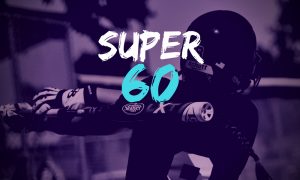The Three Components of Pitching Speed

When you ask a softball pitcher what one area of her pitching she wishes to improve on is, most will answer to throw harder or to gain speed. Pitching speed can be a tricky thing, and several factors need to align for a pitcher to throw hard. Before tapping into speed, it is encouraged that pitchers master proper body mechanics and form. This is important because it will prevent the pitcher from injury and having control of their body will make it easier to add speed and future pitches. Some pitchers are naturally gifted with speed earlier on because they are stronger or taller than other pitchers their age. Speed is developed at different rates.
Gaining pitching speed isn’t something that magically happens overnight. However, there are many drills and things pitchers can do to increase and maintain speed over time steadily. For the youngsters, speed will come as they grow and develop. The most frustrating year for the younger kids is the leap from 10U to 12U. Many pitchers at this age level who are young, struggle with the transition and lack speed due to height, strength and smaller hand sizes.
Pitching speed stems from three components: legs, arms, and the stride. These three things must work in unison for the pitcher to deliver a pitch at maximum speed.
Legs: The legs are the strongest body part behind a pitcher’s pitch. Many pitchers don’t learn how to use and engage their legs until they reach the older age levels. It is so much easier said than done, and having parents and coaches yell, “use your legs” at a tired pitcher doesn’t help much. Bending the legs and getting into a good drive position is going to set the pitcher up for a faster pitch. Once the pitcher pushes off the mound towards the catcher, it’s essential to maintain a strong landing leg and to finish the pitch by dragging the back toe hard to the front leg. If a pitcher lacks any of the leg movements listed above, she will lack speed on the pitch.
Arms: Even though the legs are stronger than the pitching arm, it’s important that pitchers get their arm circle to maximum speed. If pitchers can use both arms during their pitch, the chance of the ball being delivered faster will increase. The glove arm is just as important as the throwing arm. If the pitcher can raise her glove arm after she pushes and drives off the mound, both arms will work together, and the glove arm will help pull the throwing arm down towards the wrist snap position. If a pitcher neglects the glove arm during her pitch, the throwing arm will be working alone and will tire faster than if both arms are used. It’s also important to note that the longer the arms stay, the faster they will be able to move.
Stride: The stride is the hidden treasure when it comes to pitching speed. Think of any pitcher you have seen throw who has good speed. This pitcher you are thinking of probably takes a longer stride than most pitchers. Even short pitchers can utilize the stride and produce speed behind their pitch. Experts say pitchers should be able to stride their height and beyond. The only rule is that the pitcher must keep her back toe in contact with the ground until the ball is released. If a pitcher jumps off the mound to gain distance, without the back foot in contact with the ground, this often results in an illegal pitch called. Having the ability to stride farther will also close down the pitching distance from the mound to home plate.
There is a lot more to speed than just trying to throw the ball hard. Next time you practice, take into consideration the three components of pitching speed. Focus on one at a time if needed. There are plenty of speed drills out there that address these areas of the pitch separately. It takes time and practice to master all three, but it can be done! If pitchers are able to bend their legs and get their body posture into a good drive position, explode off the mound, lengthen the stride by kicking the front leg up and out towards the catcher and extending, hold a strong front leg on the landing, and produce arm speed, then the chance that the pitcher will throw the pitch with maximum speed is increased greatly.
Photo by Jade Hewitt, National Pro Fastpitch Photographer





